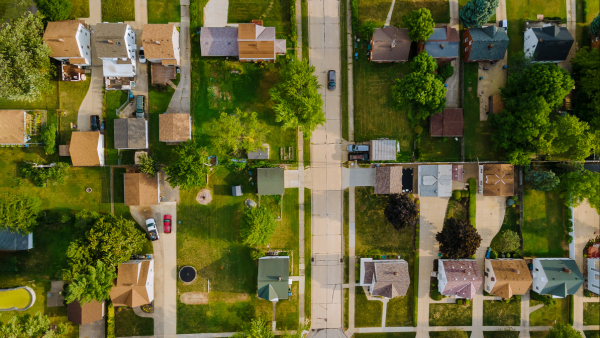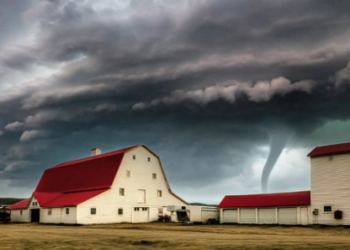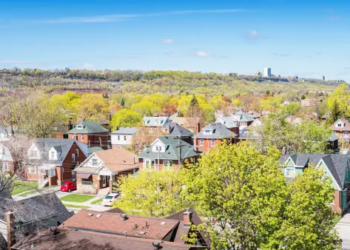Cliquez ici pour la version française.
As the Bank of Canada’s rate hikes caught up to homeowners, the 2023 Canadian housing market was characterized by tightening affordability and buyer uncertainty. National inventory increased closer to normal levels, but that came at the cost of slowing sales. However, now that inflation is coming down, many economists predict the Bank of Canada is done raising rates and that they will come down in mid to late 2024. What will that mean for the 2024 housing market? Zoocasa’s experts weigh in on the top four trends we can expect to see in the coming year.
Prices Will Continue to Decline, Especially for Cottage Country
We’ve already seen many would-be buyers return to the sidelines this fall, with month-over-month sales plunging in October by 3.4% nationally, and unless prices come down, those buyers won’t be enticed to re-enter the market for non-essential purchases.
As Lauren Haw, Zoocasa’s Broker of Record & Industry Relations Officer, explains, “There’s a current chasm between the bid/ask for many property types. Sellers are still priced quite high relative to what non-urgent and hesitant buyers are willing to spend, meaning sellers in 2024 will have to come down to the buyers’ preferred pricing in order to sell.”
Non-urgent buyers, such as those moving up or downsizing, are going to delay their purchases, preferring to hold onto their current homes rather than risk higher payments. Though lower sales will help bring prices down in most segments, the demand for the idyllic family home will remain competitive. “There will still be continued pressure for family homes in prime locations which will keep prices buoyant for great detached homes in great school districts,” said Haw.
Prices have already started their descent from the summer peak and the national average home price in October 2023 decreased for the fourth month in a row to $731,100. However, the property types that will benefit the most from price drops will be entry and mid-level cottages and recreational properties. “Non-essential properties that are disposable in nature, especially those that were over-sold and speculated upon during the pandemic, will see the biggest price drops,” predicted Haw.
The Ongoing Impact of High Interest Rates
“The Bank of Canada’s 10 rate hikes since March 2022 seem to be achieving its goal of bringing inflation down, however, the full impact has yet to be felt,” explains Carrie Lysenko, Zoocasa’s Chief Executive Officer. It takes several months for the effect of each rate hike to trickle down across economic markets, and in some cases, it can take as long as a year or a year and a half.
What this means for the real estate market is that even if rates stay flat, as many predict they will, the impact of previous rate hikes will continue to grow. “Every month that passes, more current homeowners will see their mortgages up for renewal at these higher rates, likely leading to more forced selling,” said Lysenko.
For example, the average 2020 homebuyer in Toronto had a monthly mortgage payment of $3,737, based on one of the best available rates in September 2020 of 1.64%. Now if that same 2020 Toronto homebuyer is up for renewal, their monthly mortgage payments will increase to $4,499 a month based on the September 2023 rate of 5.24%.
Pre-Construction Firesales Will Increase
In our 2023 fall market predictions report, we expected a slowdown in the pre-construction industry and this will hold true going into 2024. According to the Canadian Home Builders’ Association, 37% of builders cancelled projects in Q3 of 2023 and 65% said interest rates are causing them to build fewer units. “This lack of builder confidence is reducing housing starts and in the mid to long-term, this will exacerbate the undersupply issue in Canada,” said Lysenko.
“Many of the pre-con investors who closed and financed at the 2018-2021 rates will not qualify to close these properties at today’s rates. Prospective landlords will have to put more equity down and/or be underwater from a cash flow perspective,” said Haw. There’s also the possibility of investors selling as an assignment and never having to close, which will create a firesale market in many buildings.
It Could All Turn On a Dime
Home prices are on a downward trend now, which is typical for the winter months as price growth generally accelerates before the beginning of the spring market. In 2022, the national average home price peaked in March at $855,800 and reached the bottom in December at $705,600. However, Haw predicts we have not yet hit bottom.
“Once that bottom is hit and prices start to go back up, it will be a rapid ascent to the top as the latent demand for housing in urban cores race to get back in before prices peak again,” explained Haw. Once the curve starts to head back up, investors with notions of stabilized future returns will likely re-enter the market too.
Safe Harbor Statement
The statements contained herein may include statements of future expectations and other forward-looking statements that are based on eXp World Holdings, Inc.’s (“we” and the “Company”) management’s current views and assumptions and involve known and unknown risks and uncertainties that could cause actual results, performance or events to differ materially from those expressed or implied in such statements. These statements include, but are not limited to, statements about industry trends, including buyer and seller demand; geographical and geopolitical trends; predictions related to fiscal policy; and the continued growth of our agent and broker base. Such forward-looking statements speak only as of the date hereof, and the Company undertakes no obligation to revise or update them. Such statements are not guarantees of future performance.















